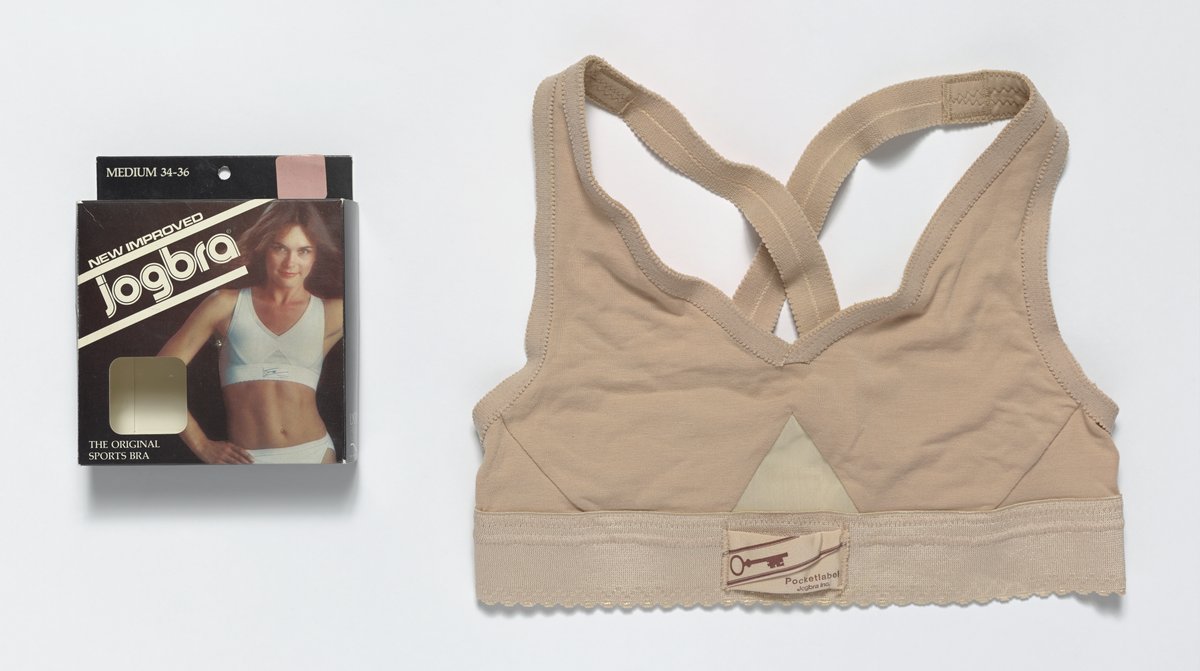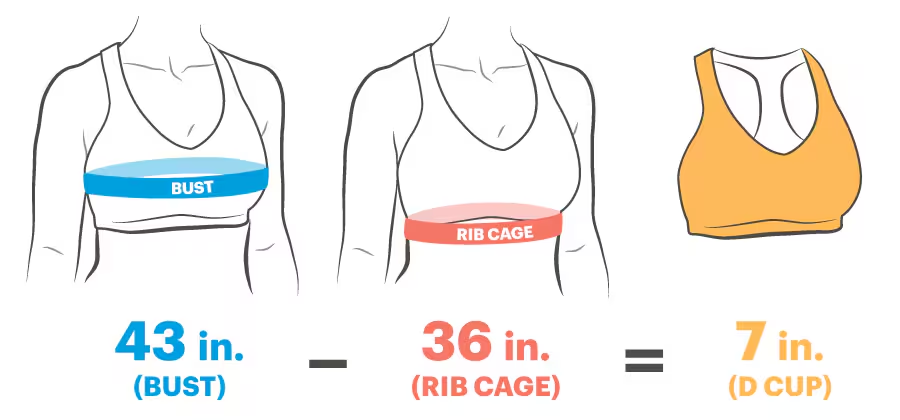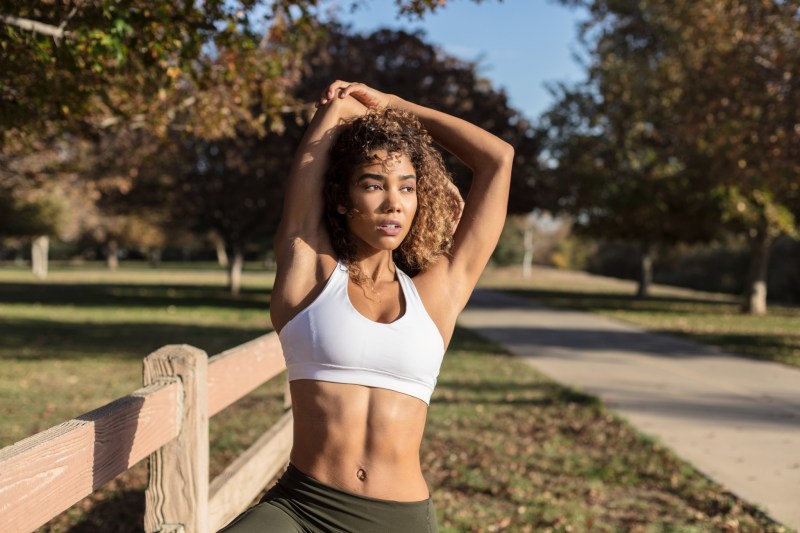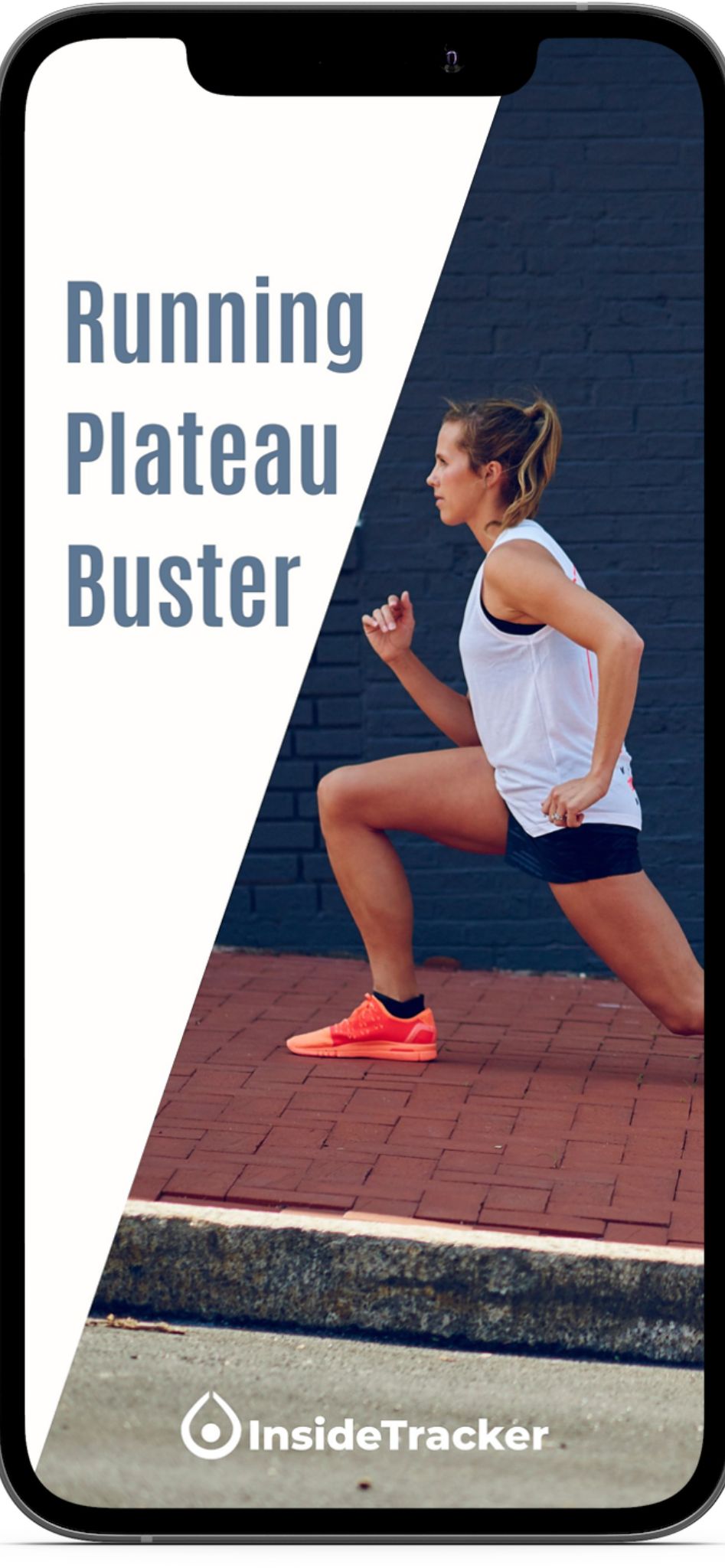You might not have stopped to think about more than comfort when choosing a sports bra, but there’s evidence that an ill-fitting one could restrict your breathing while running. On the flip side, having a well-fitting sports bra could actually enhance performance.

In 1977, runners Lisa Lindahl and Polly Smith stitched together two jockstraps to create the original “Jogbra,” which has since become the indispensable sports bra.
But even though the technology has come a long way, and we’re offered many more choices, a recent study shows there is still room for improvement.
Sports Bras Can Limit Breathing
In fact, more supportive sports bras are shown to reduce oxygen consumption by 7%, potentially causing subtle changes in your running stride.
To come to this conclusion, researchers at the University of British Columbia tracked the breathing and lung function of nine elite runners. For the test, they ran on a treadmill wearing custom sports bras that could be adjusted from loose to tight.

The results showed that bras that were too tight caused runners to take more shallow breaths and fewer extra breaths per minute. As the bands were loosened, they had better running economy overall.
Their advice is to wear a sports bra that offers support but isn’t overly tight around the ribcage.
The experiment is the result of the hypothesis that a too-tight bra compromised respiratory or lung function, and that’s a theory most women would probably be able to corroborate without testing.
Author Shalaya Kipp, a postdoc who was involved in the study, explains.
“A decline in lung function makes breathing harder, which is especially critical during exercise or daily physical activity.”
They inserted a catheter up the nasal passage and down the esophagus in an attempt to prove their theory. The runners completed treadmill tests with the invasive equipment attached, and the researchers learned that the runners took deeper, less frequent breaths, and ran more efficiently overall with a looser underband.
Ohio State University professor Dharini Bhammar called the experiment “mechanistically a very strong study.”
“No one’s looked at underband tightness separate from total breast support, and no one has done work of breathing with sports bras, because that’s a really difficult measurement. So that’s a really cool, kind of novelty in the study, which makes it special.”
These findings are especially important to runners because of the 1.3% improvement in running economy, which can majorly impact performance. A 2% percent change would translate to a three-minute improvement in a three-hour marathon.
Are Sports Bras Supposed to be Tight?
Did you know that 80% of women are wearing the wrong bra size?! Now imagine that bra is impacting the thing you love doing, running!
We’ve done a round up of the best running sports bras, but this study is a great reminder that our tests might get you started, but the fit and feel is on you! You need to pay more attention to these two key factors:
- If you’ve ever thought your sports bra feels to tight around the band, it probably is!
- Try it on and take some really big deep breaths. You should be able to feel like your rib cage can fully expand.
Kipp told The Washington Post that runners should consider more than how the bra feels while they are resting.
“Get your ventilation up. Do some deep breaths in the changing room. Wear one that is correctly fitted. That’s probably the biggest thing that would help.”
Olympic distance runner Kim Conley said that even though she hadn’t given her sports bra much thought before, she will now.
“For an elite runner, that’s significant, especially as qualifying standards get harder and harder. Everyone is looking for even a 1 percent gain. I think it’s significant and something I’ll think about now.”
Sports Bras Can Actually Improve Efficiency
So should you still wear a sports bra? The answer is yes, and there’s research to back that up.
The director of the Breast Biomechanics Research Center at the University of Memphis, Douglas Powell, is the co-author of a 2022 study that found increased breast support is associated with increased running economy.
14 participants ran on a treadmill in different fitting sports bras, their breast sizes ranging from B to DD cups.
On average, the runners experienced a 7% improvement in running economy when they wore a more supportive bra.
Powell said in the paper, “we believe that by reducing breast motion, we reduce that jiggle effect and make running more efficient, and that contributes to improved economy.”
Measuring for a Sports Bra
Still, it’s clear that your sports bra could be impairing your breathing on your run. That’s why it’s important to do you research and get the right fit.
First, you’ll want to measure both your bust and your rib cage so you can find the correct size. Every brand sizes a bit differently, so you’ll want to compare your measurements to their specific sizing guide.
This chart from Brooks’ website is helping for determining your correct band size:

Here are a few tips and tricks to keep in mind the next time you go shopping for one.
- You want the band around your ribcage to be snug, but not tight. You should be able to fit two fingers between the band and your skin, but no more.
- When you raise your hands and turn sideways in front of a mirror, the band shouldn’t ride up in the back and it shouldn’t pull up onto your breast tissue in the front. If it does, you need a smaller band size (or to adjust the hook-and-loop closure in the back).
- The same two-finger test goes for the shoulder straps. They shouldn’t feel as if they are digging into your skin.
- Wider bands, both around the ribs and on the shoulders, are better at distributing weight.
- Don’t be afraid to test them out by running in place, doing some jumping jacks, or bending at the waist to touch your toes. The bra should feel supportive but comfortable.
The correct cup size is important for support as well; if your cups wrinkle or gap, or you feel like you’re moving too much inside of them, then size down.
Here’s a handy chart from Brooks as well that helps you figure out the correct cup size in a sports bra:


The best way to find what works for you is to keep trying on different brands and styles until you find a great fit, so don’t be afraid to experiment.
You can also try out this calculator from Title Nine.
It seems like this study should push female runners to consider their sports bra in the same way they consider a shoe or hydration pack, because it can have a small but significant impact on their output.
And like they say, every little bit helps!




 Tread Lightly Running Podcast (A Run To The Finish Podcast)
Tread Lightly Running Podcast (A Run To The Finish Podcast)
